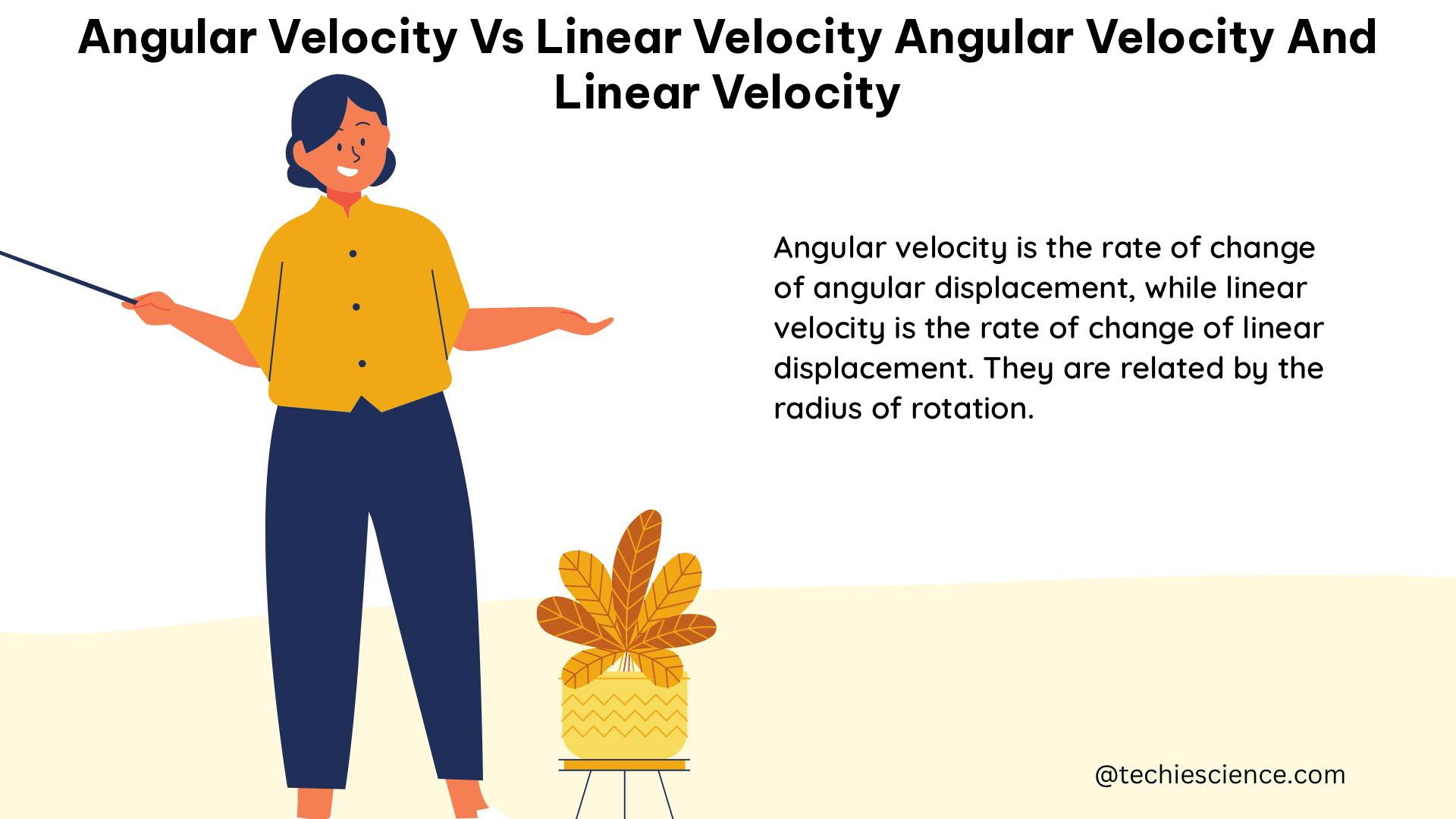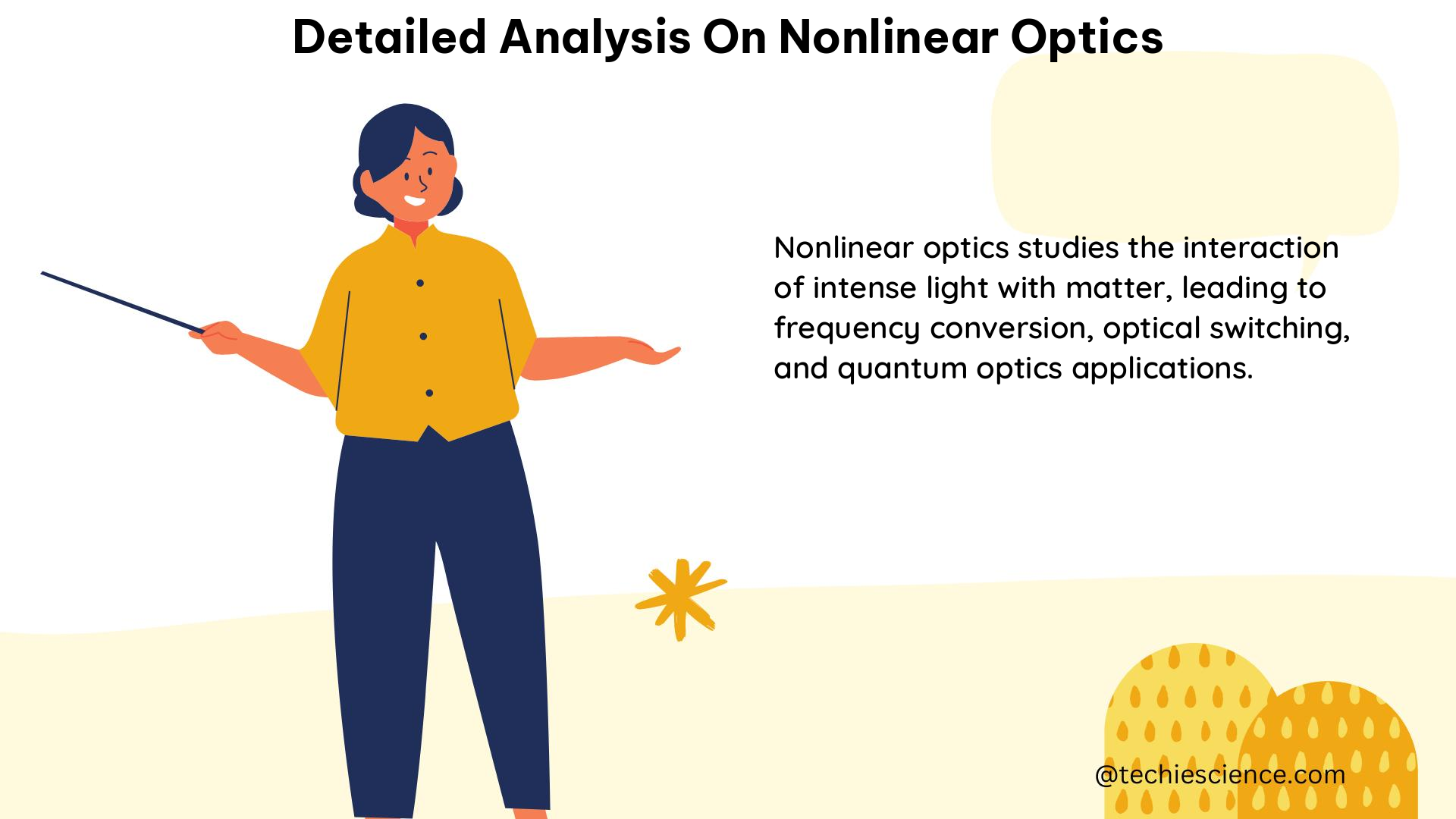Summary
Angular velocity and linear velocity are two fundamental concepts in physics that describe the motion of objects. Angular velocity is the rate of change of angular displacement, while linear velocity is the rate of change of linear displacement. Understanding the relationship between these two types of velocities is crucial for analyzing the motion of objects, particularly in circular motion. This comprehensive guide will delve into the technical details, formulas, examples, and numerical problems related to angular velocity and linear velocity, providing a valuable resource for science students and enthusiasts.
Understanding Angular Velocity

Angular velocity, denoted by the Greek letter omega (ω), is a measure of the rate of change of angular displacement. It is expressed in radians per second (rad/s) and can be calculated using the formula:
ω = Δθ / Δt
Where:
– ω is the angular velocity (in rad/s)
– Δθ is the change in angular displacement (in radians)
– Δt is the change in time (in seconds)
For example, if an object covers an angle of 2π radians (360 degrees) in 10 seconds, its angular velocity would be:
ω = 2π rad / 10 s = π/5 rad/s
Angular velocity is a vector quantity, meaning it has both magnitude and direction. The direction of angular velocity is determined by the right-hand rule, where the thumb points in the direction of the rotation axis, and the fingers curl in the direction of rotation.
Factors Affecting Angular Velocity
Several factors can influence the angular velocity of an object:
-
Rotational Inertia: The object’s moment of inertia, which is a measure of its resistance to changes in rotational motion, can affect its angular velocity. Objects with a higher moment of inertia will have a lower angular velocity for the same applied torque.
-
Applied Torque: The torque applied to an object can change its angular velocity. Applying a larger torque will result in a greater change in angular velocity, as described by the equation:
τ = Iα
Where:
– τ is the applied torque (in N·m)
– I is the moment of inertia (in kg·m²)
– α is the angular acceleration (in rad/s²)
- Radius of Rotation: For objects moving in a circular path, the radius of the circular path can affect the angular velocity. As the radius increases, the angular velocity decreases, as described by the relationship:
v = ωr
Where:
– v is the linear velocity (in m/s)
– ω is the angular velocity (in rad/s)
– r is the radius of the circular path (in m)
Understanding Linear Velocity
Linear velocity, denoted by the symbol v, is a measure of the rate of change of linear displacement. It is expressed in meters per second (m/s) and can be calculated using the formula:
v = Δs / Δt
Where:
– v is the linear velocity (in m/s)
– Δs is the change in linear displacement (in meters)
– Δt is the change in time (in seconds)
For example, if an object covers a distance of 10 meters in 5 seconds, its linear velocity would be:
v = 10 m / 5 s = 2 m/s
Linear velocity is a vector quantity, meaning it has both magnitude and direction. The direction of linear velocity is determined by the direction of the object’s motion.
Factors Affecting Linear Velocity
Several factors can influence the linear velocity of an object:
- Applied Force: The force applied to an object can change its linear velocity. Applying a larger force will result in a greater change in linear velocity, as described by Newton’s second law of motion:
F = ma
Where:
– F is the applied force (in N)
– m is the mass of the object (in kg)
– a is the linear acceleration (in m/s²)
-
Mass: The mass of an object can affect its linear velocity. For the same applied force, an object with a lower mass will experience a greater change in linear velocity.
-
Radius of Circular Motion: For objects moving in a circular path, the radius of the circular path can affect the linear velocity. As the radius increases, the linear velocity increases, as described by the relationship:
v = ωr
Where:
– v is the linear velocity (in m/s)
– ω is the angular velocity (in rad/s)
– r is the radius of the circular path (in m)
Relationship between Angular Velocity and Linear Velocity
The relationship between angular velocity and linear velocity is given by the formula:
v = ωr
Where:
– v is the linear velocity (in m/s)
– ω is the angular velocity (in rad/s)
– r is the radius of the circular path (in m)
This formula shows that the linear velocity of an object moving in a circular path is directly proportional to its angular velocity and the radius of the circular path. In other words, as the angular velocity or the radius of the circular path increases, the linear velocity also increases.
Examples
- Wheel with Constant Angular Velocity:
- Radius of the wheel: 0.5 meters
- Angular velocity: 10 rad/s
-
Linear velocity:
v = ωr = 10 rad/s × 0.5 m = 5 m/s -
Car in Circular Motion:
- Linear velocity: 60 km/h (16.67 m/s)
- Radius of the circular path: 100 meters
-
Angular velocity:
ω = v/r = 16.67 m/s / 100 m = 0.16 rad/s -
Satellite in Circular Orbit:
- Radius of the circular orbit: 6,731 kilometers (6,731,000 meters)
- Angular velocity: approximately 0.000015 rad/s
- Linear velocity:
v = ωr = 0.000015 rad/s × 6,731,000 m = 28,000 km/h
Numerical Problems
- A wheel has a radius of 0.2 meters and an angular velocity of 25 rad/s. Calculate the linear velocity of a point on the rim of the wheel.
Solution:
– Radius of the wheel, r = 0.2 m
– Angular velocity, ω = 25 rad/s
– Linear velocity, v = ωr = 25 rad/s × 0.2 m = 5 m/s
- A car is traveling at a speed of 72 km/h. If the car is moving in a circular path with a radius of 50 meters, calculate the angular velocity of the car.
Solution:
– Linear velocity, v = 72 km/h = 20 m/s
– Radius of the circular path, r = 50 m
– Angular velocity, ω = v/r = 20 m/s / 50 m = 0.4 rad/s
- A satellite is orbiting the Earth in a circular path with a radius of 42,164 kilometers. If the satellite’s linear velocity is 7.9 km/s, calculate its angular velocity.
Solution:
– Radius of the circular orbit, r = 42,164 km = 42,164,000 m
– Linear velocity, v = 7.9 km/s = 7,900 m/s
– Angular velocity, ω = v/r = 7,900 m/s / 42,164,000 m = 0.000187 rad/s
Conclusion
Angular velocity and linear velocity are two fundamental concepts in physics that describe the motion of objects. Understanding the relationship between these two types of velocities is crucial for analyzing the motion of objects, particularly in circular motion. This comprehensive guide has provided a detailed overview of angular velocity and linear velocity, including their definitions, formulas, examples, and numerical problems. By mastering these concepts, science students and enthusiasts can deepen their understanding of the physical world and apply these principles to various real-world scenarios.
References
- Calcworkshop. (2020-01-22). Angular and Linear Velocity 4 Surefire Examples! – Calcworkshop. Retrieved from https://calcworkshop.com/radian-measure/angular-and-linear-velocity/
- Physics Stack Exchange. (2021-02-23). Can someone provide an intuitive relation between linear and angular velocity? Retrieved from https://physics.stackexchange.com/questions/616572/can-someone-provide-an-intuitive-relation-between-linear-and-angular-velocity
- GeeksforGeeks. (2024-05-17). Relation between Angular Velocity and Linear Velocity. Retrieved from https://www.geeksforgeeks.org/relation-between-angular-velocity-and-linear-velocity/
- HyperPhysics. (n.d.). Angular Velocity. Retrieved from http://hyperphysics.phy-astr.gsu.edu/hbase/rotq.html
- Khan Academy. (n.d.). Linear velocity. Retrieved from https://www.khanacademy.org/science/physics/circular-motion-and-gravity/centripetal-acceleration/a/what-is-linear-velocity
